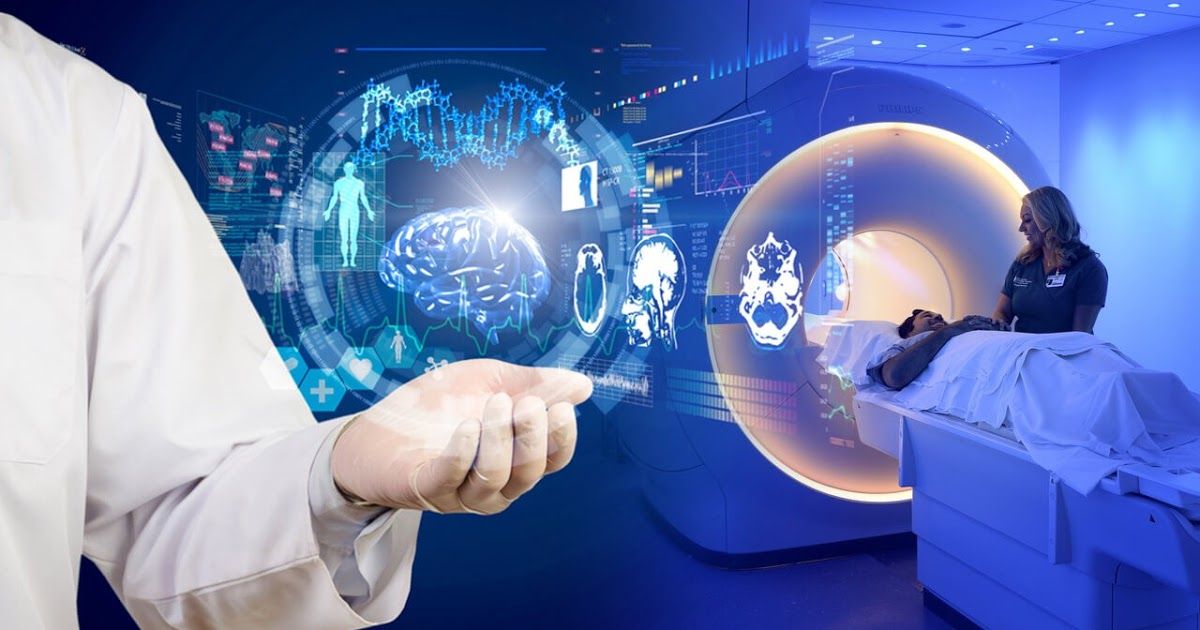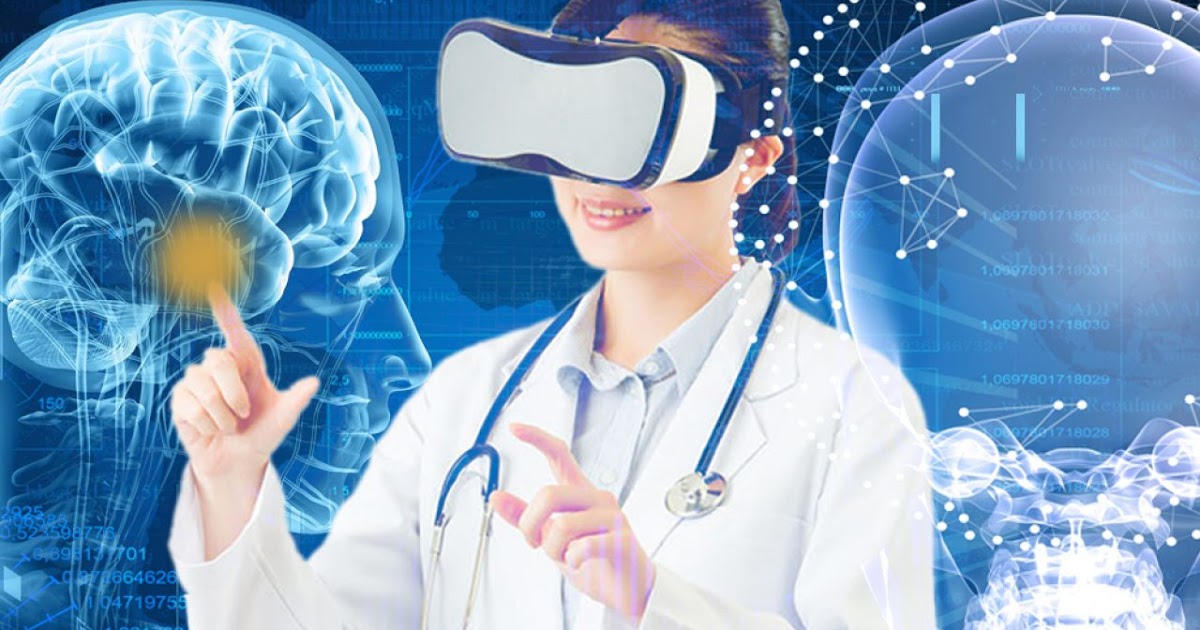The Future of Medicine: How VR is Transforming Healthcare
The Immersive Revolution in Healthcare
In the ever-evolving landscape of medicine, a revolutionary transformation is taking place. Virtual Reality (VR) is becoming a game-changer, redefining the way we approach medicine, treatment, and patient care. The immersive power of VR technology is reshaping the healthcare industry, offering new avenues for medical training, diagnostics, research, and patient engagement. This article delves deep into the world of VR and its pivotal role in shaping the future of healthcare.
Why VR Matters in Medicine
To comprehend the significance of VR in medicine, we must delve into the various facets that define this groundbreaking technology. From the understanding of what VR is to its applications in healthcare, this article will explore how VR is changing the face of healthcare as we know it.
Understanding Virtual Reality

What is Virtual Reality (VR)?
At its core, Virtual Reality is a computer-generated environment that simulates the real world or an imaginary one. It immerses the user in a three-dimensional, interactive experience. In the context of medicine, VR offers a dynamic platform for innovative healthcare solutions. VR technology is more than just a visual experience; it often involves auditory and haptic feedback to create a multisensory environment, making it feel more real.
How VR Technology Works
VR technology relies on a combination of hardware and software to create a seamless and immersive experience. Headsets, controllers, and sensory devices work in harmony to transport users to virtual realms, with high-definition graphics and real-time responsiveness. These headsets use motion tracking and sensors to detect the movement of the user’s head, adjusting the view accordingly. Hand controllers and gloves provide haptic feedback, allowing users to interact with the virtual environment.
The Evolution of VR in Healthcare
VR’s journey in the medical field has been nothing short of remarkable. From its early experiments, which were often rudimentary and lacked realism, to the sophisticated applications we see today, VR has come a long way in transforming healthcare. Initially, VR was primarily used for entertainment and gaming, but its potential in healthcare was quickly recognized. This recognition has led to the development of VR systems specifically tailored to medical applications. The development of more affordable and user-friendly VR equipment has further fueled its adoption in healthcare.
Applications of VR in Healthcare
Virtual Reality in Medical Training
Medical professionals are harnessing the power of VR for training purposes. Simulated surgeries and procedures, once confined to textbooks and lectures, now provide a hands-on, risk-free learning environment for surgeons, nurses, and students. These simulations offer a level of interactivity that textbooks and traditional training methods can’t match. Surgeons can practice and refine their skills in a virtual environment, allowing them to make mistakes without consequences, ultimately leading to safer and more skilled practitioners.
Pain Management and Therapy
VR is redefining the way we perceive and manage pain. It offers a drug-free alternative by immersing patients in calming and distracting experiences, providing genuine relief for acute and chronic pain conditions. Virtual reality pain management techniques often involve creating relaxing or engaging scenarios that can divert the patient’s attention from their pain. For example, a burn victim might find relief from their pain by immersing themselves in a snowy mountain landscape, focusing on the cold sensations and beautiful scenery rather than their own discomfort.
VR for Rehabilitation
Physical therapy and rehabilitation are taking a leap into the future with VR. Patients can engage in engaging exercises and activities that aid in their recovery and enhance their overall well-being. These exercises can be customized to the patient’s specific needs and adjusted as they progress in their recovery. For example, a stroke patient can use VR to perform exercises that help improve motor skills in a game-like environment, making the rehabilitation process more engaging and effective.
Patient Education and Engagement
VR is bridging the communication gap between doctors and patients. By visualizing complex medical conditions and treatment options, patients gain a clearer understanding of their health, leading to informed decisions. Doctors can use VR to explain medical procedures, showing patients what to expect in a highly visual and immersive way. This not only improves understanding but also reduces anxiety and fear.
Reducing Patient Anxiety
For many patients, the medical environment can be anxiety-inducing. VR offers a comforting distraction, allowing patients to escape the confines of the hospital room and reduce anxiety during treatment. Imagine a child about to undergo a painful medical procedure. By wearing a VR headset and being transported to a whimsical, animated world, the child’s focus is shifted away from the impending pain. This has been particularly useful in pediatric care, as well as for patients undergoing procedures that may induce anxiety.
Remote Consultations and Telemedicine
VR is breaking down geographical barriers in healthcare. It enables healthcare professionals to conduct remote consultations, reaching patients in distant or underserved areas. This is especially valuable in rural or remote regions where access to specialized healthcare is limited. With VR, patients can consult with experts from the comfort of their local healthcare facility, reducing the need for long and costly journeys.
Expanding Access to Healthcare
In a world where access to healthcare can be limited, VR steps in to offer tele-rehabilitation and health check-ups, ensuring that medical care is available to all, regardless of location. Tele-rehabilitation involves using VR to guide patients through rehabilitation exercises while healthcare professionals monitor their progress remotely. This approach has proven to be effective in scenarios where travel to a healthcare facility is challenging, such as post-surgery recovery or physical therapy for elderly patients.
VR in Diagnostics and Visualization

Virtual Reality Imaging
In the realm of medical diagnostics, VR enables the creation of 3D visualizations of medical scans. This breakthrough provides a more comprehensive view of the patient’s condition. Virtual reality imaging is especially beneficial in radiology and diagnostic imaging. By converting 2D scans, such as CT or MRI images, into 3D visualizations, doctors can explore the patient’s anatomy in unprecedented detail. This not only aids in diagnosis but also in treatment planning, as surgeons can better understand the patient’s unique anatomical structure.
3D Visualization of Medical Scans
Rather than viewing 2D images, doctors can now explore 3D representations of scans, which can reveal intricate details that were previously hidden. For example, in neurosurgery, a 3D visualization of a patient’s brain scans can help surgeons plan precise incisions and avoid critical structures, resulting in safer surgeries and better outcomes.
Interactive Anatomical Models
VR brings anatomy to life. Interactive anatomical models offer an invaluable educational tool for medical students and a clearer understanding of the human body for patients. Medical students and aspiring healthcare professionals can now dissect virtual cadavers, explore the intricacies of human anatomy, and understand the spatial relationships between various structures. These interactive models make the learning process more engaging and provide a deeper understanding of the human body’s complexity.
Surgical Planning and Precision
Before entering the operating room, surgeons can rehearse complex procedures in a virtual space, improving their skills and increasing surgical precision. Surgical planning through VR involves creating a virtual replica of the patient’s anatomy, allowing surgeons to explore the specific details of the surgical site. They can simulate the entire procedure, identifying potential challenges and optimizing the surgical approach. This preoperative practice enhances their confidence and competence, ultimately benefiting patient safety.
Guided Surgical Procedures
During surgery, VR can guide surgeons in real time, providing essential information and enhancing surgical precision. Imagine a surgeon performing a delicate procedure, such as spinal surgery. VR can overlay critical information, like the patient’s anatomy, 3D images from scans, and even real-time data, directly within the surgeon’s field of view. This augmented reality assists in making precise decisions, reducing the risk of errors, and improving patient outcomes.
Augmented Reality for Medical Imaging
Augmented reality enhances medical imaging by overlaying real-time data onto a surgeon’s field of view, aiding in precision and decision-making. Augmented reality in medical imaging is about providing surgeons with immediate access to relevant information during procedures. For example, during a liver surgery, augmented reality can display the patient’s liver anatomy, including blood vessels and lesions, in real-time directly on the surgeon’s view. This assists surgeons in making precise incisions and minimizing damage to healthy tissue.
Enhancing Intraoperative Precision
In complex surgeries, augmented reality provides surgeons with critical data, such as blood flow and organ locations, directly within their line of sight. This information ensures that the surgical team has a complete picture of the patient’s condition and helps them make informed decisions during the operation. By improving intraoperative precision, augmented reality reduces the likelihood of complications and improves patient safety.
Advancements in Medical Research
VR is a valuable tool in drug discovery, allowing researchers to model and test new compounds more efficiently. Traditional drug discovery involves extensive laboratory work, including synthesizing and testing thousands of compounds to identify potential drugs. VR accelerates this process by creating virtual models of molecules and their interactions, helping researchers identify promising drug candidates more efficiently. By visualizing and manipulating these molecular structures in a virtual space, scientists can gain deeper insights into potential treatments.
VR for Molecular Modeling
Virtual reality facilitates the visualization and manipulation of molecular structures, assisting in drug design and development. Molecular modeling is crucial in understanding how different compounds interact with specific biological targets. In VR, scientists can visualize these interactions in 3D, making it easier to identify potential drugs and optimize their structure for enhanced efficacy.
Virtual Clinical Trials
Traditional clinical trials are resource-intensive and time-consuming. VR offers the potential for virtual clinical trials, accelerating the testing of new treatments. Virtual clinical trials use computer simulations and patient data to predict how a new treatment might perform. This approach can significantly reduce the time and cost associated with traditional trials. Additionally, it can lead to the development of more effective and personalized treatments.
Disease Modeling and Simulation
VR enables scientists to model diseases, helping them gain a deeper understanding of their mechanisms and progression. Disease modeling in VR involves creating realistic, 3D representations of a specific disease, such as cancer or neurodegenerative disorders. Researchers can study how the disease progresses and how different treatments affect it. This insight is invaluable in developing targeted therapies and improving patient outcomes.
Testing Hypotheses and Drug Efficacy
Researchers can use VR simulations to test hypotheses and assess the efficacy of potential treatments, reducing the risks associated with human trials. VR simulations allow researchers to experiment with different scenarios and treatments in a controlled environment. This helps them identify the most promising approaches before proceeding to costly and potentially risky human trials. Additionally, VR simulations can be personalized, taking into account individual patient data for more accurate predictions.
Overcoming Challenges and Concerns

Ethical Considerations in VR Healthcare
The collection and use of patient data in VR healthcare must be conducted with utmost privacy and security considerations. Protecting patient privacy is a fundamental ethical consideration in VR healthcare. When using VR for medical purposes, patients often share sensitive health data and personal information. Healthcare providers and developers must ensure that this data is securely stored, transmitted, and used only for its intended purposes. Patients should be informed about how their data will be handled and given the option to consent or opt-out.
Informed Consent
Patients must be informed about the use of VR in their treatment and give their consent for its integration into their care. Informed consent is a cornerstone of ethical healthcare practice. Patients have the right to know how VR will be used in their treatment, its potential benefits, and any risks involved. They should be able to make an informed decision about whether they want to participate in VR-based therapies or use VR devices as part of their care. Healthcare professionals should provide clear and comprehensive information to facilitate informed consent.
Adoption Barriers
The adoption of VR in healthcare faces challenges related to costs and accessibility, which need to be addressed for widespread use. The cost of VR equipment and software can be a significant barrier to widespread adoption in healthcare settings. High-quality VR headsets and associated hardware can be expensive, making it challenging for smaller healthcare facilities or those in resource-constrained areas to implement VR solutions. Addressing these cost barriers involves finding more affordable options and exploring potential subsidies or funding sources.
Training and Integration Challenges
Healthcare professionals need proper training to make the most of VR technology, and it must be integrated seamlessly into existing healthcare systems. Implementing VR technology in healthcare requires training for healthcare professionals. Learning to use VR equipment, software, and applications effectively is essential to provide safe and efficient care. Additionally, healthcare organizations need to integrate VR seamlessly into their existing systems, including electronic health records and treatment protocols. This integration may require changes in workflows and policies to accommodate VR technology.
Managing Cybersecurity Risks
With the integration of VR comes the responsibility of safeguarding sensitive patient information from potential cyber threats. VR healthcare applications involve the collection, storage, and transmission of sensitive patient data. Ensuring the security and confidentiality of this data is crucial. Cybersecurity measures, such as encryption, secure networks, and regular system audits, are essential to protect patient information from unauthorized access or data breaches. Healthcare organizations should have robust cybersecurity policies in place and keep up with the latest security practices to safeguard patient data.
Ensuring Secure Telehealth
As telehealth grows, ensuring the security of virtual healthcare interactions is critical to maintaining patient trust and data integrity. Telehealth relies on virtual interactions between healthcare providers and patients. Ensuring the security of these interactions is paramount. Telehealth platforms and VR applications used in telehealth should employ strong encryption methods and authentication processes to safeguard the confidentiality of patient information. Healthcare organizations should also educate both staff and patients on best practices for secure virtual healthcare interactions.
Success Stories and Case Studies
Case Study: Virtual Surgery Training
A real-world case study showcases how VR is transforming surgical training, providing a safe and realistic environment for surgeons to hone their skills. The case study explores a surgical training program that incorporates VR simulations. Surgeons-in-training use VR to practice complex procedures in a virtual environment. The results reveal improved surgical skills, reduced errors, and increased confidence among trainees. The case study highlights the tangible benefits of VR in surgical training and its potential to enhance patient safety.
Real-World Impact
Exploring the tangible benefits of VR in surgical settings, from reduced errors to improved patient outcomes. Beyond the case study, the real-world impact of VR in surgery is substantial. Surgeons who have undergone VR training demonstrate enhanced skills and confidence in the operating room, ultimately reducing the likelihood of errors. The improved outcomes for patients undergoing surgeries performed by VR-trained surgeons speak to the transformative power of this technology.
Pain Management Triumphs
A real-world example illustrates how VR is changing the lives of chronic pain sufferers, reducing the need for pharmaceutical interventions. The case study focuses on patients suffering from chronic pain conditions who have incorporated VR therapy into their pain management regimen. The results reveal reduced pain intensity, decreased reliance on pain medication, and improved overall quality of life. Patient testimonials provide insights into the personal impact of VR in chronic pain management.
Patient Testimonials
Hearing from patients who have experienced pain relief through VR therapy provides insight into the personal impact of this technology. Patient testimonials offer valuable perspectives on the effectiveness of VR in pain management. These firsthand accounts detail the experiences of individuals who have found relief from chronic pain through VR therapy. They share their journey from pain and discomfort to improved well-being and enhanced quality of life, shedding light on the human side of VR healthcare.
Remote Healthcare with VR
In underserved rural areas, VR is making a difference through telemedicine, offering healthcare access where it was once limited. The case study examines a telemedicine program that employs VR technology to connect healthcare providers with patients in remote and underserved regions. The results show increased access to healthcare services, improved patient outcomes, and reduced healthcare disparities. This case study highlights the transformative role of VR in expanding healthcare access.
Improving Healthcare Access
Understanding how VR is breaking down barriers and making healthcare accessible to all, regardless of location. Beyond the case study, the article explores the broader impact of VR on healthcare access. VR technology is bridging the gap in healthcare disparities by providing services to remote and underserved communities. Patients who were previously unable to access specialized healthcare can now do so virtually, improving their overall health and well-being.
The Future of VR in Healthcare

AI and VR Integration
AI and VR are joining forces to provide personalized treatment plans based on individual health data and predictive analytics. The integration of AI and VR holds great promise in healthcare. AI algorithms can analyze vast amounts of patient data to provide personalized treatment plans and make predictive healthcare recommendations. VR technology enhances the delivery of these plans by creating immersive and engaging experiences for patients. This integration aims to offer individualized care and empower patients to take an active role in their health management.
Personalized Treatment Plans
The future of healthcare involves tailoring treatments to the unique needs of each patient, made possible through VR and AI integration. Personalized treatment plans consider an individual’s medical history, genetic makeup, and lifestyle factors to create a customized approach to care. VR enhances this by creating interactive and engaging treatment modules that are tailored to each patient’s preferences and needs. Patients can actively participate in their treatment, improving adherence and outcomes.
Predictive Healthcare
Through data analysis, VR can assist in predicting health trends and recommending preventive measures, leading to a more proactive approach to healthcare. Predictive healthcare combines AI’s data analysis capabilities with VR’s immersive delivery to foresee potential health issues before they become critical. By using AI algorithms to analyze a patient’s health data, VR can generate immersive scenarios that show the impact of lifestyle choices on future health. Patients can then make informed decisions about their habits and preventive measures.
Home Healthcare and Monitoring
The extension of VR into homes is enabling patients to manage their health conditions while being monitored by healthcare professionals. VR is not limited to the hospital setting; it is extending into patients’ homes. Patients can use VR to perform exercises, manage chronic conditions, and receive guidance from healthcare professionals remotely. This approach allows for more comprehensive and personalized care while reducing the need for frequent in-person visits.
Aging in Place with VR
VR is making it possible for seniors to age in the comfort of their homes, with healthcare support readily available through immersive technology. VR plays a crucial role in enabling seniors to age in place comfortably. It provides immersive experiences that enhance cognitive and physical functions, reducing the risks of cognitive decline and isolation. Seniors can access healthcare services through VR, connect with healthcare professionals, and even participate in virtual social activities, ultimately improving their quality of life.
VR’s Role in Global Health
In regions with limited healthcare resources, VR is connecting underserved communities with the medical expertise they need. In underserved regions, where access to healthcare is scarce, VR is breaking down barriers. Telehealth services that utilize VR connect patients in remote areas with healthcare experts, providing medical consultations and treatments. This approach not only improves healthcare access but also reduces healthcare disparities.
Disaster Response and Relief Efforts
VR is proving invaluable in disaster response, helping medical teams coordinate efforts and deliver critical care in emergency situations. Disaster response teams are increasingly turning to VR to improve their coordination and patient care during crises. VR can create a shared virtual space where medical teams from around the world can collaborate and provide assistance in real-time. In disaster-stricken areas, VR can enable remote surgery, diagnostic support, and training for local healthcare providers, significantly improving disaster response efforts.
Legal and Regulatory Framework
FDA Approval for VR Healthcare
Understanding the current regulatory landscape and the steps needed for VR healthcare solutions to gain approval from the U.S. Food and Drug Administration. The approval of VR healthcare solutions by the U.S. Food and Drug Administration (FDA) is a critical milestone in their adoption and use. Healthcare providers, developers, and manufacturers must navigate the FDA’s regulatory framework to ensure that their VR applications meet safety and efficacy standards. The article explores the current regulatory environment and the path to FDA approval for VR healthcare solutions.
Current Regulations
An overview of the existing regulations governing VR healthcare applications and devices. The current regulatory framework for VR healthcare applications is evolving to keep pace with technological advancements. Regulatory agencies like the FDA are continually updating their guidelines to ensure the safety and effectiveness of these applications. This section provides an overview of the existing regulations and standards that govern VR healthcare, emphasizing the need for compliance and adherence.
Future Expectations
A look into the evolving regulatory environment and what we can anticipate in the future of VR healthcare. The regulatory environment for VR healthcare is not static; it is evolving to accommodate the rapid growth of VR technology in the healthcare sector. As VR continues to play a more significant role in healthcare, regulatory agencies are expected to refine their guidelines, ensuring that these applications meet the highest standards of safety, effectiveness, and data security.
Medical Liability and VR
The integration of VR introduces new legal considerations related to patient safety, informed consent, and medical malpractice. As VR becomes more prevalent in healthcare, it introduces legal implications that must be considered. These include issues related to patient safety, informed consent, and potential medical malpractice claims. The legal implications section discusses the responsibilities of healthcare professionals and institutions when using VR in patient care and the measures they can take to mitigate legal risks.
Risk Mitigation
How healthcare institutions and professionals can mitigate the legal risks associated with the use of VR in medical practice. To mitigate the legal risks associated with VR in healthcare, healthcare institutions and professionals can implement specific risk-mitigation strategies. These strategies involve clear documentation, informed consent processes, thorough training, and adherence to regulatory guidelines. By taking proactive measures to reduce legal risks, healthcare providers can embrace VR technology while maintaining patient safety and legal compliance.
The Business of VR Healthcare

Venture Capital in VR Health
Venture capital is pouring into the VR healthcare sector, driving innovation and opening opportunities for startups and established companies. The VR healthcare sector is experiencing substantial investment from venture capital firms. This financial support is driving innovation, enabling startups to develop groundbreaking VR healthcare solutions and established companies to expand their offerings. The article delves into the impact of venture capital on the growth of VR healthcare and the potential benefits for investors and patients.
Funding Opportunities for Startups
Entrepreneurs in the VR healthcare space can explore the various funding opportunities available to turn their ideas into reality. For entrepreneurs and startups in the VR healthcare sector, there are numerous funding opportunities to explore. These include venture capital, government grants, and private investors. The section outlines the pathways available for startups to secure funding and develop their VR healthcare innovations.
Market Growth and Trends
Analysts project significant growth in the VR healthcare market, with potential benefits for both investors and patients. The VR healthcare market is poised for substantial growth, with analysts forecasting a significant increase in its size and impact. This section explores the projected market size, considering the increasing adoption of VR in various healthcare applications and its potential benefits for investors and patients alike.
Industry Shaping Trends
A closer look at the trends shaping the VR healthcare industry, from the rise of telemedicine to the integration of AI. The VR healthcare industry is marked by several trends that are shaping its trajectory. These trends include the rapid expansion of telemedicine, the integration of AI in healthcare applications, and the development of more accessible and affordable VR equipment. Understanding these trends is crucial for healthcare professionals, entrepreneurs, and investors seeking to participate in the VR healthcare sector.
Conclusion
The Immersive Path Forward
In conclusion, the future of medicine is being reshaped by the immersive power of VR. From medical training to patient care, diagnostics, and research, VR is proving to be a versatile tool that promises to enhance healthcare in ways we never imagined. The journey ahead is filled with exciting possibilities, and as the healthcare industry embraces this VR revolution, patients and professionals alike can look forward to a brighter, more immersive future.
The transformative potential of VR in healthcare is boundless, and its impact on patient outcomes, medical training, and healthcare accessibility is already evident. As VR continues to advance and integrate with other technologies, it will play a central role in shaping the future of healthcare, ensuring that patients receive the best care possible.
FAQ
What is Virtual Reality (VR) in healthcare, and how does it work?
Virtual Reality in healthcare is a technology that creates computer-generated, immersive environments for various medical applications. VR works by employing specialized headsets, controllers, and sensory devices to immerse users in a 3D, interactive experience. These headsets use motion tracking and sensors to detect users’ movements, providing a responsive and realistic environment.
How has VR evolved in the field of healthcare over the years?
VR in healthcare has come a long way, evolving from rudimentary applications to sophisticated medical training, diagnostics, and patient engagement tools. Advancements in VR hardware and software have made it more accessible and user-friendly, expanding its use in medical settings.
In what ways does VR revolutionize medical training?
VR transforms medical training by offering realistic, risk-free environments for practicing surgeries and medical procedures. Surgeons and healthcare professionals can refine their skills, make mistakes without consequences, and enhance their competence, ultimately improving patient safety.
How does VR contribute to pain management and therapy in healthcare?
VR provides an alternative approach to pain management by immersing patients in calming or engaging virtual experiences. This distraction technique can reduce pain intensity and the need for pain medications, offering relief to patients with acute and chronic pain conditions.
What role does VR play in patient education and communication with healthcare professionals?
VR bridges the communication gap between doctors and patients by visualizing complex medical conditions and treatments. Patients gain a better understanding of their health, leading to informed decisions, reduced anxiety, and improved doctor-patient relationships.
How is VR used in diagnostic imaging and medical visualization?
VR enhances diagnostic imaging by creating 3D visualizations of medical scans, such as CT or MRI images. Surgeons and doctors can explore detailed anatomical structures, aiding in diagnosis and surgical planning.
Can VR be integrated into surgical planning and precision procedures?
VR allows for preoperative simulations, where surgeons can rehearse procedures in a virtual environment. It also offers augmented reality (AR) for intraoperative guidance, overlaying critical information on the surgeon’s view to enhance precision and reduce errors.
How is VR contributing to medical research and drug development?
VR aids in drug discovery by modeling and testing new compounds efficiently. It also enables virtual clinical trials, disease modeling, and simulations, providing a deeper understanding of diseases and potential drug treatments.
What are the ethical considerations and privacy concerns in VR healthcare?
Ethical considerations in VR healthcare include patient privacy, informed consent, and potential adoption barriers. Safeguarding patient data, ensuring informed consent, addressing costs, and cybersecurity risks are paramount.
How is VR expanding healthcare access, particularly in remote or underserved regions?
VR is extending healthcare access by enabling telemedicine and tele-rehabilitation in remote areas. Patients in underserved regions can consult with healthcare professionals and receive medical services without the need for extensive travel, reducing healthcare disparities.
In our previous article on “Applications of VR in Training and Simulations: Beyond Fun” we explored the myriad ways in which Virtual Reality (VR) is revolutionizing the healthcare industry. If you’re curious to delve deeper into the applications of VR in surgical procedures, don’t miss our detailed section on “VR Success in Surgery” for a fascinating case study on virtual surgery training. Additionally, discover the potential benefits of AI and VR integration in healthcare with insights provided in our “AI and VR Integration” section.
If you’re eager to delve deeper into the world of VR in healthcare, we highly recommend visiting Medium. This offers cutting-edge insights and expert analysis on the latest trends and advancements in medical technology. This resource provides valuable information on how VR is revolutionizing healthcare from an SEO-relevant perspective.




Uma resposta